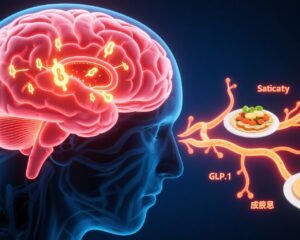Introduction
Over the past several decades, average life expectancy has steadily increased across many countries. Today, people not only wish to live longer but seek to improve the quality of those additional years. However, as individuals enter their 60s and 70s, chronic diseases such as hypertension, diabetes, and heart disease often appear, dramatically impacting physical and cognitive functioning, and ultimately the overall quality of life.
Recent groundbreaking research sheds light on a crucial factor that influences how healthy we remain in old age: the dietary habits we follow during midlife. A comprehensive international study analyzing health data from over 100,000 individuals across three decades demonstrates a strong association between specific midlife eating patterns and the likelihood of aging healthily without chronic diseases after 70.
Defining Healthy Aging: What Does It Mean?
The research defines “healthy aging” as reaching the age of 70 with intact cognitive, physiological, and psychological functions, free from any of 11 major chronic diseases including cancer, diabetes, myocardial infarction, coronary heart disease, heart failure, stroke, kidney failure, chronic obstructive pulmonary disease, Parkinson’s disease, multiple sclerosis, and amyotrophic lateral sclerosis.
Using data from two large U.S. prospective cohort studies—the Nurses’ Health Study and the Health Professionals Follow-up Study—which collectively included 105,015 participants with an average age of 53 at enrollment (1986–2016), the researchers identified that only 9.3% (9,771 individuals) met the criteria for healthy aging. This sobering statistic emphasizes how rare it is to evade chronic illness and functional decline with advancing age.
What the Data Tell Us: The Power of Midlife Dietary Patterns
Researchers from Canada’s University of Montreal, Harvard T.H. Chan School of Public Health, and the University of Copenhagen further conducted detailed analyses examining how midlife dietary patterns relate to the chances of healthy aging over 30 years.
Past studies have established that diet plays a pivotal role in preventing cardiovascular diseases and other chronic conditions, with its impact second only to smoking in influencing mortality risk among the elderly. What this new research reveals is that the quality of diet during midlife also correlates strongly with maintaining a broad spectrum of health parameters after 70 years.
The study focused on eight specific, well-validated dietary patterns:
1. Alternate Healthy Eating Index (AHEI)
2. Alternate Mediterranean Eating Pattern (AMED)
3. Dietary Approaches to Stop Hypertension (DASH)
4. Mediterranean-DASH Intervention for Neurodegenerative Delay (MIND)
5. Healthy Plant-based Dietary Index (hPDI)
6. Planetary Health Diet Index (PHDI)
7. Reduced Inflammatory Potential of Diet (rEDIP)
8. Reduced Insulin Demand Index (rEDIH)
Of these, adherence to the AHEI-2010 showed the strongest association with healthy aging. This index, developed by Harvard, scores diets on nutrient density to reduce chronic disease risk, emphasizing vegetables, fruits, whole grains, nuts/legumes, omega-3 fatty acids, and polyunsaturated fats, while minimizing sugary beverages and juices, red and processed meats, sodium, and trans fats. Moderate alcohol intake is allowed.
Participants in the highest 20% adherence group for AHEI had an 86% higher chance of remaining disease-free and functionally healthy at age 70 compared to those in the lowest 20%. At age 75, their likelihood of achieving healthy aging more than doubled (2.24 times).
Other patterns, such as DASH (which emphasizes low fat, salt, and sugar with lean protein sources), Mediterranean diets (plant-based, rich in olive oil and seafood, low in red meat and refined grains), and healthy plant-based diets similarly correlated with better aging outcomes.
Common Nutritional Themes for Healthy Aging
Analyzing these dietary patterns reveals seven core food groups consistently linked to healthier aging:
– Fruits
– Vegetables
– Whole grains
– Unsaturated fats
– Nuts
– Legumes
– Low-fat dairy
Conversely, four food categories were associated with lower odds of healthy aging:
– Trans fats
– Sodium
– Sugary beverages
– Red and processed meats
This pattern underscores a balanced diet emphasizing nutrient-rich plants, healthy fats, and modest dairy, while limiting harmful components common in processed and Western diets.
Practical Recommendations for Midlife Nutrition
Translating this evidence into daily practice, individuals in middle age can take meaningful steps to improve their prospects for healthy aging:
– Prioritize a variety of colorful fruits and vegetables daily.
– Choose whole grain products over refined grains.
– Include nuts and legumes regularly as protein and healthy fat sources.
– Opt for fatty fish and lean poultry, limit red and processed meats.
– Use healthy oils like olive oil instead of saturated fats or trans fats.
– Avoid sugary drinks and minimize sodium intake.
– Consume low-fat dairy or dairy alternatives appropriately.
These choices align well with many established dietary guidelines worldwide and offer a sustainable approach to reduce the risk of multiple chronic diseases simultaneously.
Expert Insights
Dr. Anne-Julie Tessier of the University of Montreal, lead author of the study published in Nature Medicine, emphasizes, “Our findings highlight that what you eat in midlife profoundly impacts how you age. The small daily choices around diet accumulate over decades, influencing your chances of avoiding debilitating diseases and maintaining cognitive and physical functions.”
Meanwhile, Harvard nutrition experts reiterate that adherence to the AHEI pattern confers broad protection, supporting the prevention of cardiovascular disease, diabetes, and even neurodegenerative disorders.
Patient Scenario: Michael’s Journey to Healthy Aging
Michael, a 52-year-old office worker with a family history of heart disease and type 2 diabetes, was inspired by new research to adopt a healthier diet. He swapped out sodas for water and herbal teas, incorporated more vegetables and whole grains into his meals, and replaced red meat dinners with fish and plant-based proteins thrice weekly.
Over the next two decades, Michael maintained these habits, paired with regular exercise and routine medical check-ups. At 73, he remains active, cognitively sharp, with no diagnosis of chronic diseases. Michael’s case exemplifies how midlife lifestyle adjustments can forge a path toward healthy aging.
Conclusion
This landmark 30-year longitudinal study involving over 100,000 participants provides compelling evidence that healthy aging free from chronic diseases is achievable and strongly linked to midlife dietary patterns. Adherence to specific, nutrient-dense dietary regimes like the AHEI can increase disease-free survival and functional independence well into the seventh and eighth decades of life.
As the global population ages, these findings offer critical guidance for clinicians, public health practitioners, and individuals aiming not just to extend lifespan but to enhance healthspan. Continued research and public health efforts should prioritize nutritional education and accessible healthy food choices to support population-wide healthy aging.
References
[1] Anne-Julie Tessier et al., Optimal dietary patterns for healthy aging. Nature Medicine. 2025. DOI: 10.1038/s41591-025-03570-5
[2] Scoring highly on Alternative Healthy Eating Index lowers risk for many illnesses. Harvard Health Blog. 2025. Retrieved from https://www.health.harvard.edu/blog/scoring-highly-on-alternative-healthy-eating-index-lowers-risk-for-many-illnesses-202202082681



